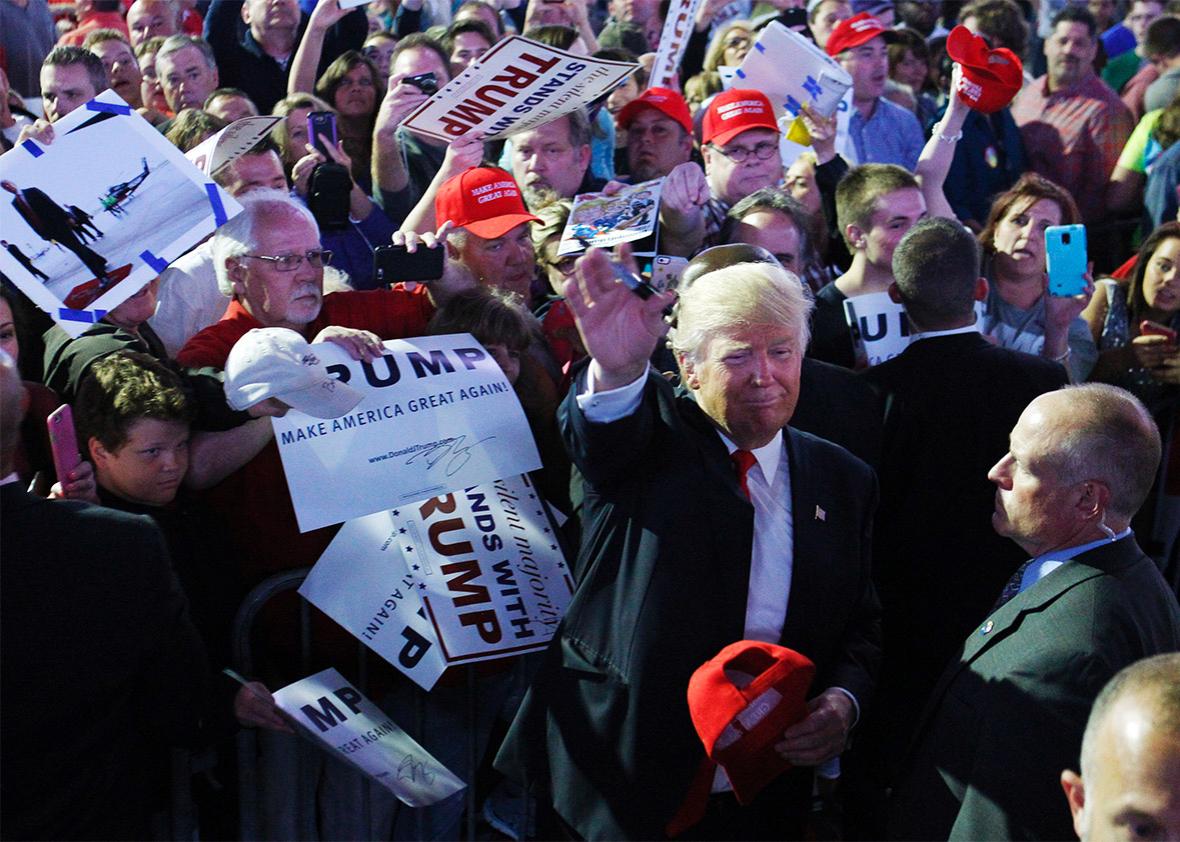The last time the Indiana Republican primary mattered was 40 years ago, in 1976, when Gerald Ford and Ronald Reagan battled for the presidential nomination of a Republican Party convulsing over its ideological future.
Indiana mattered then for much the same reason it matters now, only the valences have reversed. Ford, the sitting president, was the standard-bearer for a moderate Republicanism that was waning against a vigorous and ascendant brand of conservatism. Ronald Reagan, a one-time actor and two-time governor of California, was the champion of that conservatism, channeling right-wing anger over Ford and other moderates into a fierce challenge for the GOP nomination.
This was a new, open fight for control of the party, and conservatives had the zeal and organizational muscle to excel, winning low-turnout primaries and open caucuses in a fight where every delegate mattered, including the ones in Indiana. Reagan won the Hoosier State by just a few thousand votes, on the strength of religious conservatives, the bedrock voters of this new right.
Assisted by this nascent conservative movement and propelled by his bellicose message of national strength, Reagan fought Ford to a near-draw, losing by a scant 117 delegates at the convention in Kansas City, Missouri. As historian Geoffrey Kabaservice writes in Rule and Ruin: The Downfall of Moderation and the Destruction of the Republican Party, “Reagan’s campaign illustrated both the gathering strength of the conservative movement within the Republican Party and its ability to stir the blood of voters with emotional appeals moderates conspicuously lacked.”
Now, in 2016, it’s conservatives who are on the ropes, battered by a foe of their own making in the form of Donald Trump. And once again, Indiana matters. Although this time, it’s not just an important state; it’s a decisive one. If Ted Cruz can win—as one of two remaining candidates with traditional credentials—he can deny Trump the delegates he needs to win outright, throwing the nomination fight into an open convention, where he hopes to prevail as the only figure left with any democratic legitimacy. If Trump wins, well, then he wins full stop, marching to the nomination under the rules.
What makes Indiana especially interesting is that it’s potentially fertile territory for both candidates.
The first is that it looks a lot like a Cruz state. Texas aside, Cruz strongholds share a profile. In places where he wins—Iowa, Alaska, Kansas, Maine, Idaho, Wyoming, and Utah—white, churchgoing evangelicals are a prominent part of state politics. Indiana fits that mold. Thirty-one percent of Indiana adults identify as “evangelical” in a state that’s 86 percent white. (To compare, 28 percent of Iowa adults identify as evangelical in a state that’s 91 percent white.) Indiana evangelicals lifted Republican Mike Pence to the governorship in 2012 and backed some of the most controversial measures of his administration, including strict anti-abortion laws and the Religious Freedom Restoration Act, which sparked a national firestorm over religious liberty and discrimination. Assuming these evangelicals are regular churchgoers, they stand as a potent anti-Trump voting block.
This should make the state easy to predict, right? Not so much, since Indiana looks like a Trump state, too. What do his strongholds have in common? They tend to be larger (Indiana is the 16th-largest state by population); they tend to be denser (it’s also the 16th-most dense state); and they tend to be segregated, with predominantly black cities (often old industrial cores) surrounded by predominantly white suburbs and exurbs. In other words, Trump does best where racial tensions are highest. It’s why the Mid-Atlantic and the South were fertile ground for his campaign; white voters in these regions score highest on implicit-bias tests.
Where do white voters in Indiana fall? A touch past the median for implicit bias, higher than average, but not especially high (like whites in New Jersey) or particularly low, like those in New Mexico. This makes sense. Indiana contains three of the most segregated metropolitan areas in the United States, including Gary, which tops the list for most segregated. Where you find segregation, you find anti-black attitudes, and where you find anti-black attitudes, you find Trump voters.
Between evangelicalism and racism, we’re left with a state that either Trump or Cruz could win, although available polls give Trump the clear advantage. Either way, it’s a state that’s reflective of the narrative of this Republican race. Which is to say that the present fight is a kind of inversion from the one in 1976. Then, evangelical Christians were part of a rising conservative vanguard that promised to wrest the party away from moderates. Today, they’re trying to beat back a candidate who represents a waxing faction of nativists and ethno-nationalists, who aren’t as interested in ideological conservatism—some are even “moderate,” in a way—as much as they want to take the country back to a past where white Americans were truly dominant.
Donald Trump is their Ronald Reagan, and at this stage, he is on his way to victory.
